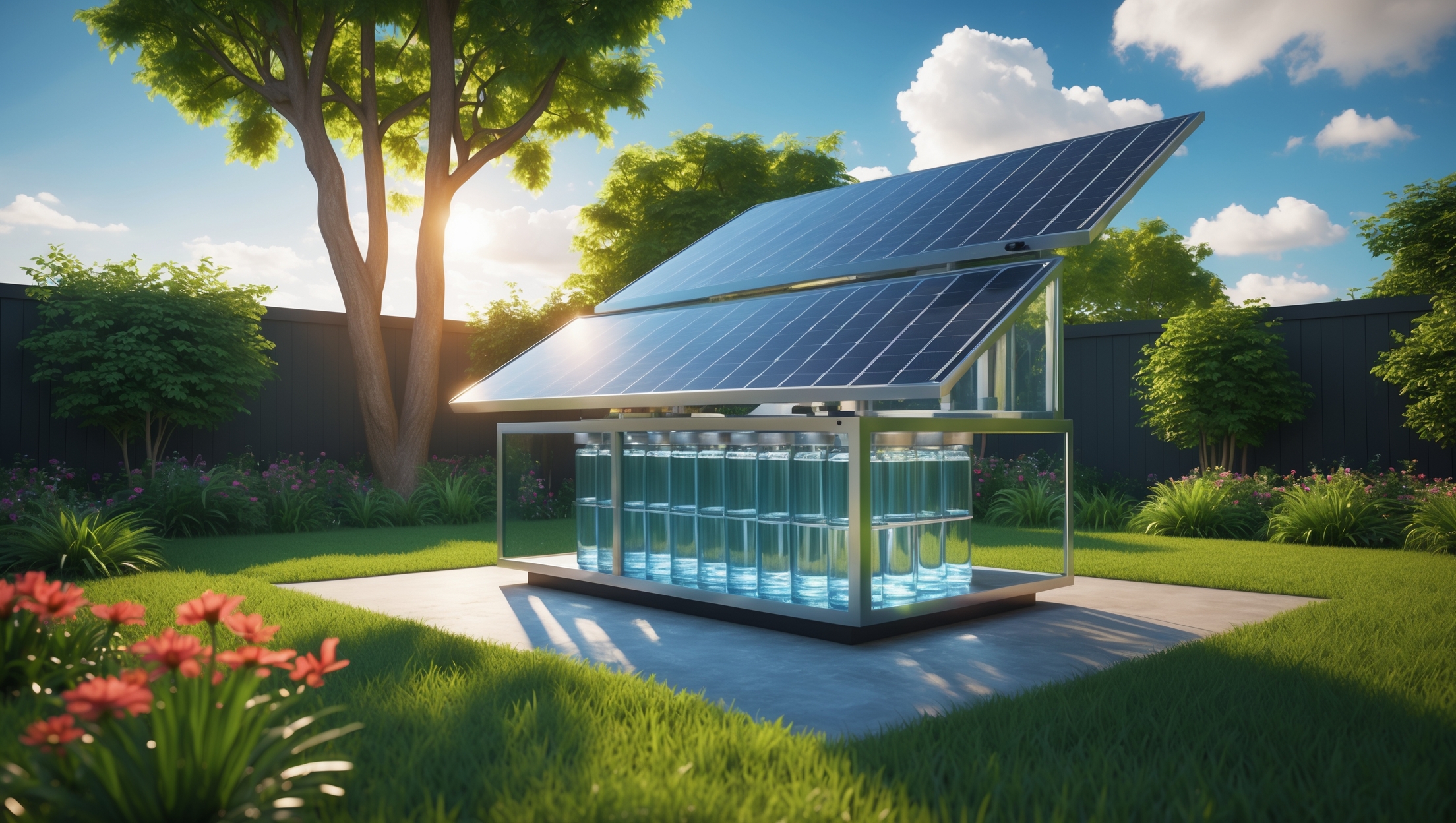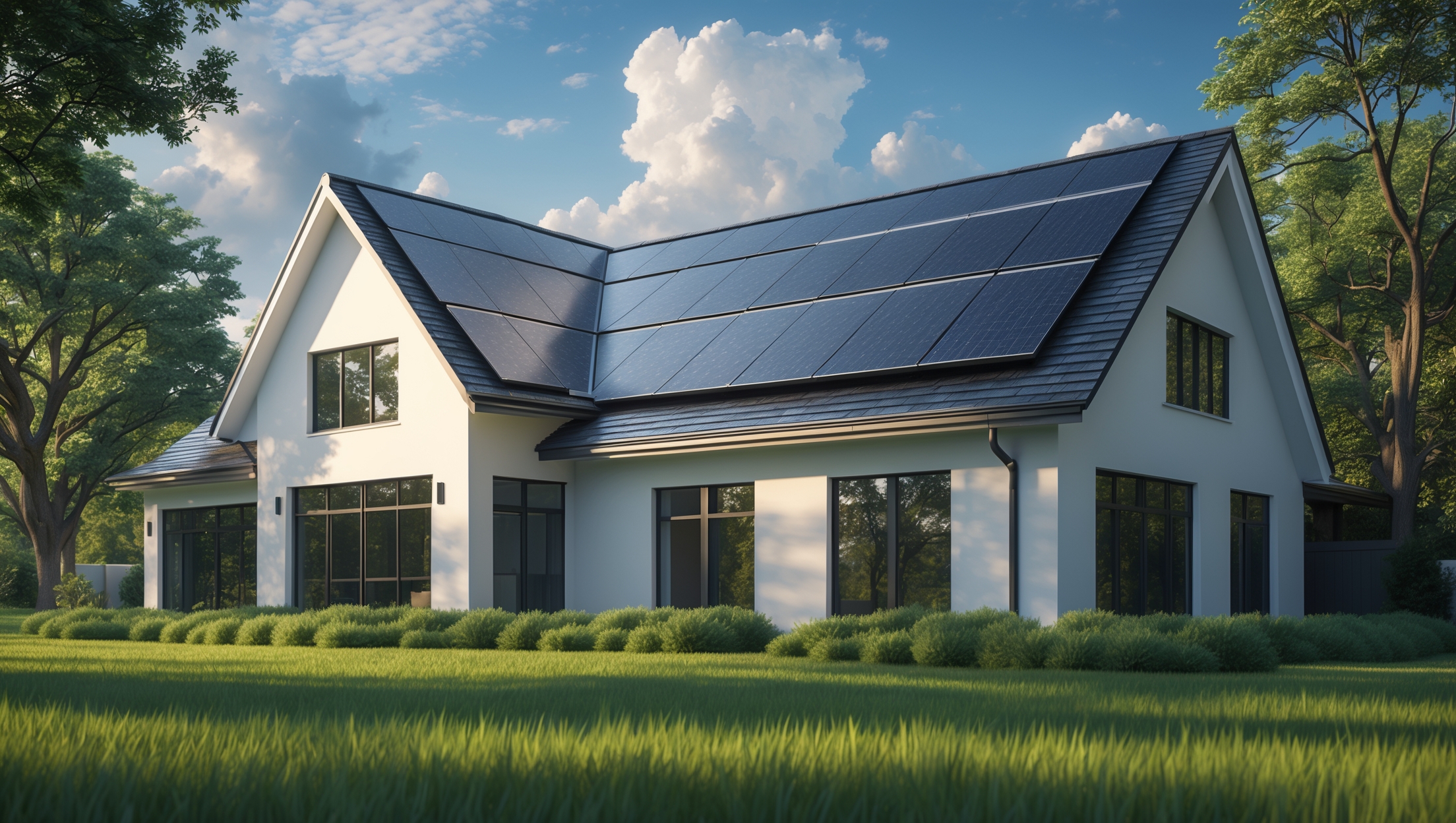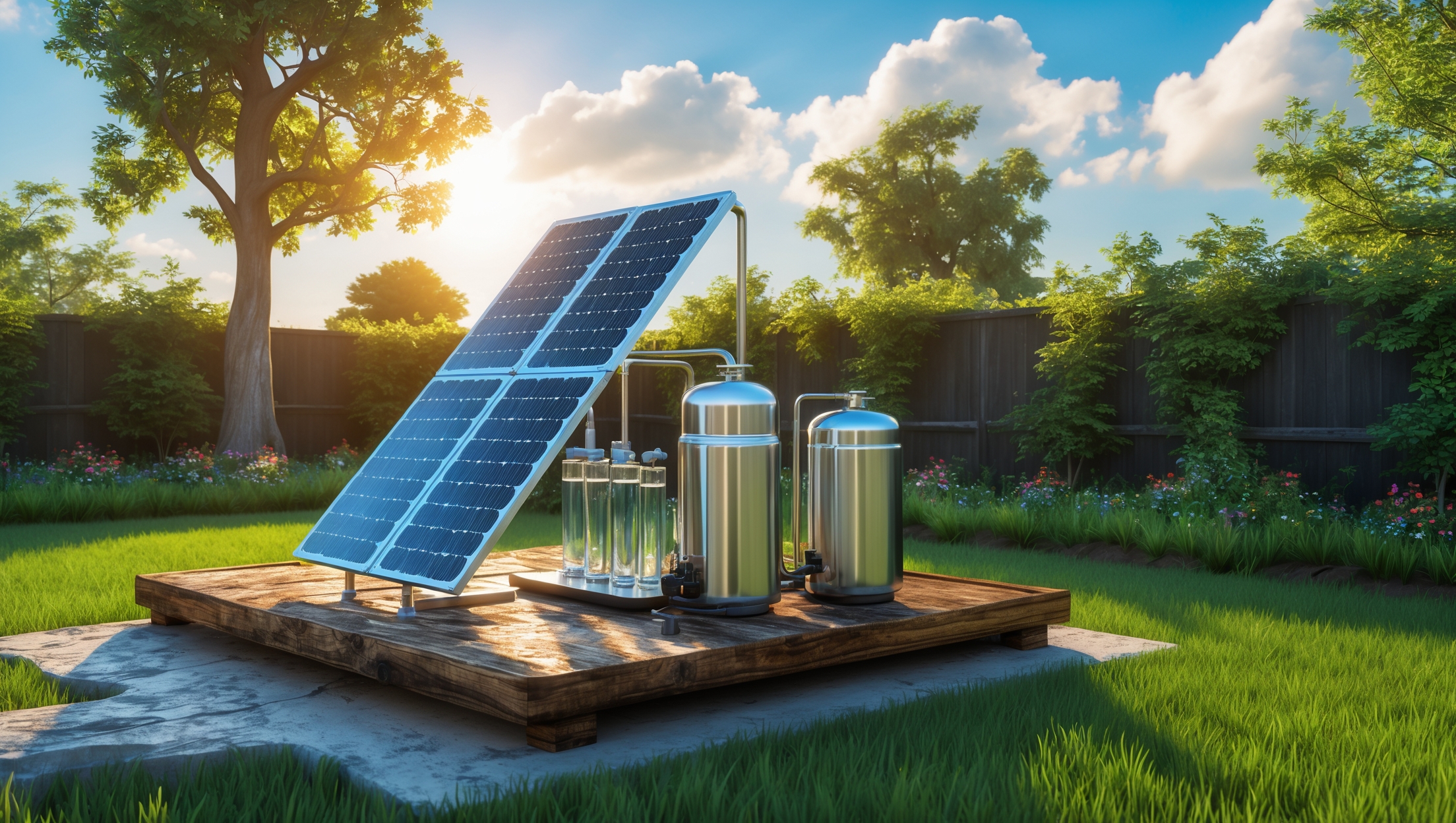Introduction: Why Consider a DIY Solar Desalination System?
As freshwater scarcity becomes a growing concern in many regions, sustainable living enthusiasts are turning to innovative solutions to secure their water supply. Solar desalination—using solar energy to convert saline or brackish water into drinkable freshwater—offers a compelling off-grid solution. While most people associate desalination with massive coastal plants, compact home-scale solar desalination systems are becoming increasingly viable and affordable. For eco-conscious homeowners, these systems offer true water independence, resilience during droughts, and alignment with green living principles.
However, embarking on a DIY solar desalination project requires careful planning and budgeting. Costs can escalate without a solid understanding of the essential components, installation nuances, and ongoing maintenance requirements. This guide provides a detailed, practical cost breakdown for building your own solar desalination system, from basic single-basin distillers to more advanced multi-stage setups. We’ll explore common pitfalls, component costs, cost-saving strategies, and how to ensure your investment pays off in both sustainability and savings.
Understanding Solar Desalination: The Basics
How Does Solar Desalination Work?
Solar desalination harnesses sunlight to evaporate water, leaving behind dissolved salts and impurities. The vapor then condenses on a cooler surface, where it is collected as purified water. The two main categories for home DIY are:
- Passive (Solar Still): Simple glass or polycarbonate enclosures use the greenhouse effect for evaporation and condensation. Ideal for small-scale, low-budget projects.
- Active (Solar-Powered Distillation): Uses photovoltaic panels to power pumps, fans, or heating elements, increasing output but requiring more upfront investment.
Potential Applications for Homeowners
- Converting brackish well water or rainwater into potable water
- Emergency or off-grid water supply
- Sustainable irrigation for gardens (with post-treatment as needed)
Major Cost Factors in a DIY Solar Desalination System
System Type and Output Capacity
The main driver of cost is your desired daily output. A small passive still may yield 1–5 liters per day, while more advanced active systems can provide 20 liters or more daily. Consider:
- Scale: Drinking water needs for 1–4 people vs. garden irrigation or full household supply
- Water Source: Salinity and contamination level affect pre-filtration and design complexity
- Automation: Manual water feeding vs. automated pumps and sensors
Key Components and Materials
- Solar panels (for active systems)
- Solar still enclosure (glass, polycarbonate, or acrylic)
- Condensation collection surfaces (glass, metal, or food-grade plastic)
- Water collection and storage containers (HDPE preferred)
- Pumps and plumbing (optional, for active systems)
- Pre-filtration and post-treatment filters (carbon, sediment, UV, etc.)
- Frame, insulation, and sealing materials
Detailed Cost Breakdown: Passive vs. Active Systems
Passive Solar Still (1–5 Liters/Day)
- Glass or polycarbonate panels (1.5–2 m2): $40–$80
- Food-grade base tray: $20–$40
- Collection channel and bottles: $15–$30
- Sealants, insulation, and hardware: $15–$25
- Optional pre-filtration (sediment filter): $10–$20
Total estimated cost: $90–$195
Active Solar Distillation System (10–25 Liters/Day)
- Photovoltaic solar panels (100–200W): $120–$250
- DC water pump: $25–$50
- Distillation chamber (glass/steel): $80–$150
- Condensation coil or plates (copper/stainless): $40–$80
- Controller, wiring, plumbing: $40–$70
- Food-grade collection tank (20–40L): $25–$60
- Pre-filtration (sediment + carbon): $25–$40
- Optional post-treatment (UV filter): $60–$110
- Frame, insulation, and mounting: $40–$80
Total estimated cost: $455–$890
Ongoing Maintenance and Consumables
- Periodic filter replacements (annually): $20–$50
- Sealant touch-ups, cleaning supplies: $10–$20 per year
- Occasional solar panel cleaning: Minimal cost if DIY
Budgeting Tips for DIY Solar Desalination
Assessing Your Water Needs
Start by calculating your minimum daily potable water requirement. For drinking and cooking, estimate 2–4 liters per person, per day. For a family of four, a 10–15 liter/day system covers basic needs.
Prioritizing Component Quality
- Invest in high-quality glass or polycarbonate for the still cover—cheaper plastics cloud or degrade in UV exposure.
- Use food-grade stainless steel or HDPE for any water-contact surfaces to prevent contamination.
- Choose reliable solar panels with a warranty for active systems.
Where to Save and Where to Splurge
- Repurpose existing containers and hardware to cut costs.
- Opt for manual water feeding if full automation isn’t essential.
- Splurge on quality filtration and sealing materials—these impact both safety and system longevity.
Hidden Costs to Watch For
- Shipping costs for bulky glass panels or solar equipment
- Tools you may need (drill, glass cutter, etc.) if you don’t already own them
- Potential permit fees (rare for small systems, but check local regulations)
Sample Budget Worksheet: Build Your Own Estimate
| Component | Budget Range (USD) |
|---|---|
| Solar Panels (active only) | $120–$250 |
| Still Enclosure (glass/polycarbonate) | $40–$150 |
| Condensation Surface | $15–$80 |
| Water Collection Tank | $15–$60 |
| Pumps/Controllers (active only) | $25–$120 |
| Filters (pre/post) | $10–$110 |
| Frame/Insulation/Sealant | $15–$80 |
| Tools (if needed) | $0–$60 |
| Annual Maintenance | $20–$50 |
Tip: Download a customizable spreadsheet to track your actual expenses as you shop for components.
Case Example: Budgeting a 15-Liter/Day Solar Desalination System
Let’s walk through a realistic scenario for a DIYer aiming to supply potable water for a 3–4 person household using active solar distillation:
- Solar panels (150W): $180
- Distillation chamber (glass/steel): $120
- Condensation coil (stainless): $60
- Pump and controller: $75
- Collection tank (30L HDPE): $35
- Filtration (pre: sediment, post: UV): $90
- Frame, insulation, sealant: $60
- Misc. plumbing/hardware: $40
Total initial cost: $660
Estimated annual maintenance: $35
This system would produce about 15 liters of distilled water daily in sunny climates, meeting basic needs for a small family. Compare this to bottled water or water delivery—over 2–3 years, the system typically pays for itself, especially in areas with high water costs or unreliable supply.
How to Maximize Value and Avoid Costly Mistakes
Common Budgeting Pitfalls
- Underestimating the cost of quality glass or solar panels
- Skipping essential filtration, leading to water safety risks
- Neglecting to budget for annual filter replacements
- Failing to account for evaporative losses in low-humidity climates
Cost-Saving Strategies
- Source used or surplus solar panels from reputable dealers
- Use recycled glass windows for still covers, if food-safe
- Buy plumbing supplies in bulk or repurpose from old appliances
- Build a modular system—start small, then expand as needed
When to Hire Help vs. DIY
- Electrical wiring for solar panels: If you lack experience, hire a professional for safe installation
- Glass cutting: Local glass shops can cut to size more safely and precisely
- Water testing: Invest in a certified lab test for your output, especially for drinking use
Comparing DIY Solar Desalination to Off-the-Shelf Options
Commercial portable solar stills are available, but most have lower output and higher per-liter costs than a well-designed DIY system. For example, a commercial unit producing 1.5 liters/day may cost $200–$300. Building your own allows for scaling up, customizing to your water source, and long-term cost savings. When budgeting, compare lifetime costs and flexibility—DIY wins for those willing to invest time and learn new skills.
Return on Investment: Financial and Environmental
Long-Term Savings
- Eliminates or reduces bottled water purchases ($300–$1,000/year for a family)
- Reduces reliance on municipal or delivered water during shortages
- Minimal operating costs after installation (sunlight is free!)
Environmental Impact
- Zero-emission water purification—no fossil fuels or grid electricity
- Reduces plastic waste from bottled water
- Promotes water resilience in drought-prone regions
Conclusion: Is a DIY Solar Desalination System Right for You?
Building a DIY solar desalination system is an empowering step toward water independence and sustainable living. While the upfront costs can range from under $200 for a basic passive still to nearly $900 for a high-output active system, careful budgeting and smart sourcing can keep your project affordable and effective. The key is to honestly assess your water needs, research components, and plan for both initial and ongoing expenses. Remember, quality and safety should never be compromised—invest in durable, food-safe materials and reliable filtration.
Beyond the financial savings, a home solar desalination system offers peace of mind, knowing you have a reliable source of clean water even during supply disruptions. The environmental benefits are equally compelling: reduced plastic waste, lower carbon footprint, and a practical demonstration of self-sufficiency for your household or community. If you’re ready to invest some time and creativity, and you’re passionate about sustainable technology, this project can deliver lasting rewards for both your wallet and the planet.
Start small, document your expenses, and share your journey—your experience could inspire others to take the leap toward greener, more resilient living. With water security becoming ever more critical, a DIY solar desalination system is not just a smart budget move, but a meaningful contribution to a sustainable future.





Could you explain more about the maintenance requirements for both passive and active home solar desalination systems? I’m trying to figure out if the simpler, low-budget stills actually require less upkeep in the long run.
Passive home solar desalination systems, like simple solar stills, typically need less maintenance since they have fewer moving parts—mainly just cleaning the glass, removing mineral buildup, and occasionally checking seals. Active systems, which may use pumps or fans, require more regular upkeep: checking electrical components, cleaning additional parts, and possibly replacing parts as they wear. Overall, the simpler passive stills generally demand less long-term maintenance and are easier to manage on a tight budget.
Once the DIY system is up and running, how long does it typically take before the investment pays off in cost savings compared to purchasing potable water or using other filtration systems?
The payback period for a DIY home solar desalination system typically ranges from 1 to 3 years, depending on your initial investment, daily water needs, and local water costs. If you use a lot of potable water or live where prices are high, you might recoup your costs more quickly compared to purchasing bottled water or using traditional filtration systems with recurring maintenance expenses.